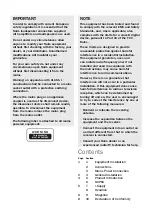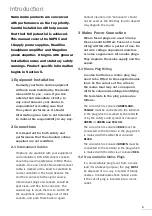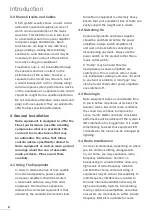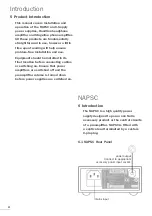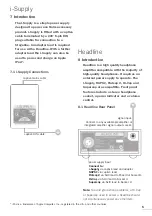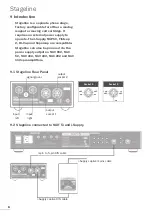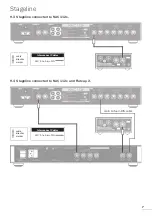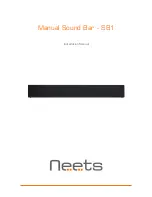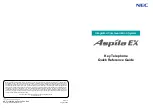
2
Introduction
3.3 Mains Circuits and Cables
A hi-fi system usually shares a mains circuit
with other household equipment some of
which can cause distortion of the mains
waveform. This distortion can in turn lead
to a mechanical hum from power amplifier
and power supply transformers. Naim
transformers are large in size with heavy
gauge windings, making them relatively
sensitive to such distortion, and it may be
necessary to take account of transformer
hum when siting your equipment.
Transformer hum is not transmitted through
the speakers and has no effect on the
performance of the system; however, a
separate mains circuit may reduce it. Such
a circuit (ideally with a 30 or 45 Amp rating)
will also improve system performance. Advice
on the installation of a separate mains circuit
should be sought from a qualified electrician.
Do not substitute alternative mains leads and
plugs to those supplied. They are selected to
offer the best possible performance.
4 General Installation
Naim equipment is designed to offer the
finest performance possible avoiding
compromise wherever practical. This
can lead to circumstances that may
be unfamiliar. The notes that follow
contain advice specifically related to
Naim equipment as well as more general
warnings about the use of domestic
audio products. Please read them
carefully.
4.1 Siting The Equipment
In order to reduce the risk of hum audible
from the loudspeakers, power supplies
and power amplifiers should be located
a reasonable distance away from other
equipment. The maximum separation
distance for connected equipment is that
allowed by the standard interconnect lead.
Some Naim equipment is extremely heavy.
Ensure that your equipment rack or table can
easily support the weight and is stable.
4.2 Switching On
Source components and power supplies
should be switched on before the power
amplifiers. Always switch amplifiers off
and wait a minute before connecting or
disconnecting any leads. Always use the
power switch on the product rather than a
mains outlet switch.
A “thump” may be heard from the
loudspeakers as power amplifiers are
switched on. This is normal, will not cause
any loudspeaker damage and does not point
to any fault or problem. A mild “pop” may
also be heard shortly after power amplifiers
are switched off.
4.3 Running In
Naim equipment takes a considerable time
to run in before it performs at its best. The
duration varies, but under some conditions
the sound may continue to improve for
over a month. Better and more consistent
performance will be achieved if the system is
left switched on for long periods. It is worth
remembering however that equipment left
connected to the mains can be damaged by
lightning.
4.4 Radio Interference
In some circumstances, depending on where
you live and the earthing arrangements
in your home, you may experience radio
frequency interference. Controls on
broadcasting in some territories allow very
high levels of radio frequency radiation
and both the choice and exact siting of
equipment may be critical. Susceptibility to
radio frequency interference is related to
the wide internal bandwidth necessary for
high sound quality. Systems incorporating
moving coil phono preamplifiers and active
crossovers are more likely to suffer. A radio
frequency filter kit is available for some


